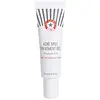What's inside
What's inside
 Key Ingredients
Key Ingredients

 Benefits
Benefits

 Concerns
Concerns

 Ingredients Side-by-side
Ingredients Side-by-side

Salicylic Acid 2%
MaskingAlcohol Denat.
AntimicrobialWater
Skin ConditioningHamamelis Virginiana Water
AstringentPolyacrylamide
Glycerin
HumectantCyclopentasiloxane
EmollientC13-14 Isoparaffin
EmollientC12-15 Alkyl Lactate
EmollientAlcohol
AntimicrobialPhenoxyethanol
PreservativeCetyl Lactate
EmollientPPG-2 Isoceteth-20 Acetate
EmulsifyingCocamidopropyl Pg-Dimonium Chloride Phosphate
Laureth-7
EmulsifyingPolysorbate 20
EmulsifyingPhenethyl Dimethicone
EmollientParfum
MaskingDehydroxanthan Gum
Emulsion StabilisingPropylene Glycol
HumectantBenzalkonium Chloride
AntimicrobialAmmonia
BufferingTetrasodium EDTA
Butylene Glycol
HumectantCapryloyl Glycine
CleansingSarcosine
Skin ConditioningCinnamomum Zeylanicum Bark Extract
AntimicrobialCedrus Atlantica Bark Extract
PerfumingPortulaca Oleracea Extract
Skin ConditioningSalicylic Acid 2%, Alcohol Denat., Water, Hamamelis Virginiana Water, Polyacrylamide, Glycerin, Cyclopentasiloxane, C13-14 Isoparaffin, C12-15 Alkyl Lactate, Alcohol, Phenoxyethanol, Cetyl Lactate, PPG-2 Isoceteth-20 Acetate, Cocamidopropyl Pg-Dimonium Chloride Phosphate, Laureth-7, Polysorbate 20, Phenethyl Dimethicone, Parfum, Dehydroxanthan Gum, Propylene Glycol, Benzalkonium Chloride, Ammonia, Tetrasodium EDTA, Butylene Glycol, Capryloyl Glycine, Sarcosine, Cinnamomum Zeylanicum Bark Extract, Cedrus Atlantica Bark Extract, Portulaca Oleracea Extract
Water
Skin ConditioningButylene Glycol
HumectantHydroxyethylcellulose
Emulsion StabilisingGlycerin
HumectantPhenoxyethanol
PreservativeSodium Hydroxide
BufferingGlycolic Acid
BufferingUrea
BufferingAloe Barbadensis Leaf Juice
Skin ConditioningBisabolol
MaskingColloidal Oatmeal
AbsorbentMaltodextrin
AbsorbentCarica Papaya Fruit Extract
Skin ConditioningPotassium Sorbate
PreservativeSodium Benzoate
MaskingCamellia Sinensis Leaf Extract
AntimicrobialChrysanthemum Parthenium Extract
Skin ConditioningGlycyrrhiza Glabra Root Extract
BleachingSalix Nigra Bark Extract
Skin ProtectingDisodium Phosphate
BufferingPolysorbate 60
EmulsifyingLeuconostoc/Radish Root Ferment Filtrate
AntimicrobialSodium Phosphate
BufferingCitric Acid
BufferingWater, Butylene Glycol, Hydroxyethylcellulose, Glycerin, Phenoxyethanol, Sodium Hydroxide, Glycolic Acid, Urea, Aloe Barbadensis Leaf Juice, Bisabolol, Colloidal Oatmeal, Maltodextrin, Carica Papaya Fruit Extract, Potassium Sorbate, Sodium Benzoate, Camellia Sinensis Leaf Extract, Chrysanthemum Parthenium Extract, Glycyrrhiza Glabra Root Extract, Salix Nigra Bark Extract, Disodium Phosphate, Polysorbate 60, Leuconostoc/Radish Root Ferment Filtrate, Sodium Phosphate, Citric Acid
Ingredients Explained
These ingredients are found in both products.
Ingredients higher up in an ingredient list are typically present in a larger amount.
Butylene Glycol (or BG) is used within cosmetic products for a few different reasons:
Overall, Butylene Glycol is a safe and well-rounded ingredient that works well with other ingredients.
Though this ingredient works well with most skin types, some people with sensitive skin may experience a reaction such as allergic rashes, closed comedones, or itchiness.
Learn more about Butylene GlycolGlycerin is already naturally found in your skin. It helps moisturize and protect your skin.
A study from 2016 found glycerin to be more effective as a humectant than AHAs and hyaluronic acid.
As a humectant, it helps the skin stay hydrated by pulling moisture to your skin. The low molecular weight of glycerin allows it to pull moisture into the deeper layers of your skin.
Hydrated skin improves your skin barrier; Your skin barrier helps protect against irritants and bacteria.
Glycerin has also been found to have antimicrobial and antiviral properties. Due to these properties, glycerin is often used in wound and burn treatments.
In cosmetics, glycerin is usually derived from plants such as soybean or palm. However, it can also be sourced from animals, such as tallow or animal fat.
This ingredient is organic, colorless, odorless, and non-toxic.
Glycerin is the name for this ingredient in American English. British English uses Glycerol/Glycerine.
Learn more about GlycerinPhenoxyethanol is a preservative that has germicide, antimicrobial, and aromatic properties. Studies show that phenoxyethanol can prevent microbial growth. By itself, it has a scent that is similar to that of a rose.
It's often used in formulations along with Caprylyl Glycol to preserve the shelf life of products.
Water. It's the most common cosmetic ingredient of all. You'll usually see it at the top of ingredient lists, meaning that it makes up the largest part of the product.
So why is it so popular? Water most often acts as a solvent - this means that it helps dissolve other ingredients into the formulation.
You'll also recognize water as that liquid we all need to stay alive. If you see this, drink a glass of water. Stay hydrated!
Learn more about Water